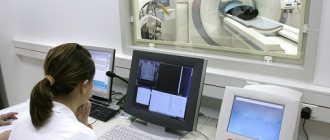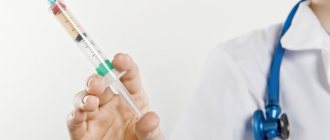Content:
- Detox and overcoming withdrawal are the main tasks in the treatment of binge drinking 1.1. Anti-binge drugs with detoxification activity 1.2. Anti-binge medications that relieve withdrawal symptoms
- How to restore the nervous system after binge drinking
- Medications to help prevent relapse after withdrawal from binge drinking
By binge drinking, narcologists mean a condition when an alcohol addict drinks alcohol in large quantities for more than a day. Breaking out of binge drinking is a very responsible procedure. It is in no way connected with the use of cucumber and cabbage pickles, as many people think. Special medications must be used here to neutralize ethanol toxins and improve the functioning of internal organs.
The wisest thing to do to get out of binge drinking is to seek help from experienced narcologists. Doctors will draw up an individual rehabilitation plan that will minimize the damage to health. Self-medication for severe alcohol poisoning is dangerous.
The use of B vitamins in patients with polyneuropathies
To date, considerable experience has been accumulated in the use of neurotropic vitamins in patients with polyneuropathies that developed against the background of diabetes, excessive alcohol consumption, and nutritional deficiency. It is especially important to prescribe B vitamins to patients with diabetes who receive metformin. Literature data indicate that such patients have a reduced content of vitamins in the body, which increases the risk of developing polyneuropathy [23]. Correcting the deficiency of neurotropic vitamins can slow down the progression of the pathological process, and in some patients achieve its regression [24].
The results of clinical studies have been published that have demonstrated the effectiveness of the use of B vitamins for the treatment of patients with polyneuropathy due to chemical alcohol intoxication. In particular, it has been shown that a positive effect is observed not only when compensating for thiamine deficiency in alcohol abusers, but also when using a complex of neurotropic vitamins [25]. This is explained by the heterogeneity of the pathogenetic mechanisms of the development of alcoholic polyneuropathy, in the development of which metabolic disorders not only of thiamine, but also of cyanocobalamin and pyridoxine play an important role.
There is information about the effectiveness of using neurotropic vitamins in patients with complex polyneuropathy. Thus, in the study by E.A. Kovrazhkina et al. [26] demonstrated that complex therapy of patients with polyneuropathy that developed due to a combination of diabetes and systematic alcohol intake led to restoration of the speed of impulse conduction along peripheral nerves (which reflected the processes of remyelination), as well as clinically significant regression of motor and sensory disorders.
Of undoubted interest is the possibility of using neurotropic vitamins for the treatment of patients with polyneuropathy (polyneuromyopathy) in critical conditions. This condition develops in patients who have been in an intensive care unit for a long time, with a deficiency of vitamins in the body in cases of reduced intake from food, impaired synthesis by the intestinal microbiome, increased utilization in acute somatic illness, etc. [27]. The results of clinical studies have established that eliminating vitamin deficiency in this situation has a positive effect on the state of sensory and motor nerve fibers and leads to a significant restoration of their impaired functions [28].
Traumatic and compressive mononeuropathies
A frequent consequence of skeletal trauma is damage to peripheral nerves, caused both by the direct impact of traumatic force on the nerve structures and by compression of peripheral nerves by bone fragments and local edema. Tissue changes in the long-term period after injury can lead to the development of tunnel syndromes in patients with anatomical prerequisites for compression of nerve trunks, as well as risk factors for damage to the PNS (metabolic disorders in diabetes, excessive alcohol consumption, insufficient intake of certain vitamins, etc.) in particular pyridoxine and thiamine, etc.) [29].
Carpal tunnel syndromes are often the result of acute trauma to the hand or shoulder joint. The development of tunnel neuropathies is observed with certain types of physical activity, in particular in people whose work involves rhythmic, repetitive movements, uncomfortable, non-physiological body position (for example, working with a computer mouse on an unsuitable work surface). The combination of a number of unfavorable factors increases the risk of developing compression of the nerve trunk. The results of experimental studies conducted on various animal models studying traumatic damage to peripheral nerves have demonstrated that the use of B vitamins has a significant positive effect. The administration of cyanocobalamin to animals after transection of the sciatic nerve contributed to its more rapid structural and functional recovery, and a more pronounced effect occurred with the simultaneous administration of other vitamins [30, 31].
Interestingly, under experimental conditions with compression of the rat sciatic nerve, a decrease in the concentration of cyanocobalamin was observed in the nerve tissue during the first 24 hours from the moment of injury [32]. Administration of the drug to animals with nerve injury led to normalization of vitamin B12 content in the tissue and a decrease in the severity of neurological deficit. This observation serves as a pathophysiological explanation for the advisability of using B vitamins in the treatment of traumatic lesions of peripheral nerves.
In the absence of indications for surgical intervention, therapy is currently recommended for the treatment of patients with traumatic neuropathies, including orthotics, local administration of glucocorticosteroids, and physiotherapeutic measures (phonophoresis of drugs, dosed physical activity) [33]. The issues of combined non-drug (reflexotherapy, laser therapy) and medicinal (including the use of B vitamins) treatment are widely discussed in the literature [34, 35].
There are results of numerous studies confirming the effectiveness of the use of complex preparations of B vitamins in the treatment of patients with mononeuropathies, including tunnel neuropathies. It was noted that the use of pyridoxine at a dose of 200 mg/day is associated with a fairly rapid and complete regression of pain and neurological deficit in a patient with carpal tunnel syndrome, which developed against the background of excessive physical activity [36]. A meta-analysis of 14 studies assessing the effectiveness of pyridoxine in patients with carpal tunnel syndrome noted that eight studies showed the effectiveness of including vitamins in complex treatment, while in the remaining six studies there was no positive result or was not significant [37]. The authors also note the relatively low methodological level of the analyzed works, which limits the convincingness of the results and indicates the need for further research. In general, studies examining the effectiveness of pyridoxine in carpal tunnel syndrome indicate that a significant number of patients experience regression of pain syndrome, which does not always correspond to positive changes in electroneurography data. The same studies also indicate a dose-dependent nature of the effect [38].
The effectiveness of the use of B vitamins in the complex treatment of patients with carpal tunnel syndrome was convincingly demonstrated in an open multicenter study in which 48 patients received a combination of cyanocobalamin and other metabolic agents, as well as painkillers - NSAIDs [39]. The authors noted that after 2 months. treatment, the intensity of the pain syndrome statistically significantly decreased (from 17.3±5.9 points to 10.3±6.1 points according to VAS, p<0.001). It was noted that the use of the vitamin complex made it possible to stop taking NSAIDs in 77.4% of cases.
Also, the positive effect of combination therapy, including the use of cyanocobalamin, occurred in patients with damage to peripheral nerves due to acute trauma or compression in degenerative lesions of the spine [40]. The authors noted that the positive effect concerned both the relief or significant reduction in the severity of pain (nociceptive and neuropathic), and an increase in the degree of functional independence of patients.
According to a recently published review of publications on the results of treatment of patients with traumatic lesions of peripheral nerves, the maximum effect of the use of B vitamins was expressed in the relief of neuropathic pain syndrome [41]. Other clinical manifestations of the disease, in particular motor disorders, respond to the therapy to a relatively lesser extent. According to the authors, for the treatment of patients with peripheral nerve injury, it is advisable to use combination therapy with the prescription of drugs that have different points of application.
In general, as shown by the results of a meta-analysis of 15 randomized clinical trials (1707 patients with peripheral neuropathies of various etiologies, including postherpetic), both monotherapy with methylcobalamin and the use of combined treatment with B vitamins are more effective compared with placebo in terms of regression of painful neurological deficit, with In this regard, the administration of a complex of neurotropic vitamins is more effective than the administration of methylcobalamin alone in terms of functional recovery and restoration of conductivity in peripheral nerves [42].
Detox and overcoming withdrawal are the main tasks in treating binge drinking
Anti-binge medications are used to bind and utilize ethanol metabolites, dangerous toxins. It is thanks to them that doctors are able to quickly improve the mental and physical condition of the addict.
Anti-binge drugs with detoxifying activity
Detox therapy is a set of measures to relieve an alcohol addict from nausea, vomiting, headaches, muscle pain, and tremors. Detoxification also reduces the craving for alcohol-containing compounds. During it the following are used:
- Absorbents . Designed for accelerated removal of all types of poisons and harmful compounds from the body. The drug treatment service has a large selection of drugs in this group. The most affordable and popular of them is activated carbon. “Polysorb” and “Smecta” have also proven themselves well.
- Diuretics . Needed to speed up the elimination of poisons.
- Means for the correction of disorders in alcoholism based on metadoxine. They protect the liver from toxic damage and help its cells renew themselves at an accelerated rate. At the same time, they reduce the desire to take another dose of alcohol.
Anti-binge medications that relieve withdrawal symptoms
Withdrawal syndrome occurs only in people with extensive drinking experience. It is always very painful, so most often addicts cannot overcome it without qualified drug treatment help. Doctors use anti-binge drugs from pharmacological groups such as:
- Nonsteroidal anti-inflammatory drugs , which include salicylic acid. With their help, you can quickly reduce combat symptoms, make the blood more fluid and thereby prevent thrombosis of small vessels.
- "Medichronal" . Composition including glucose, aminoacetic acid and other active substances. It reduces the concentration of toxic acetaldehyde in the drinker’s body, supports the functions of the nervous system, and increases the level of vital energy. At the same time, it has a central inhibitory effect and calms the patient, putting many metabolic reactions in order.
- Detoxifying medications , including sodium dimercaptopropanesulfonate, calcium pantothenate. With their help, it is possible to obtain a pronounced antioxidant, hepatoprotective, and detoxification effect. They bind and neutralize acetaldehyde and speed up regenerative reactions.
- Metabolic agents based on citric and succinic acid . Indicated if it is necessary to restore healthy tissue metabolism, increase the overall reactivity of the body, increase intellectual and physical endurance, and reduce the toxic effect of alcohol and its breakdown products.
It is very important that a doctor selects medications to help alcohol addicts break from binge drinking. Self-medication for severe alcohol poisoning very often turns out to be ineffective or further aggravates the patient’s condition.
Introduction
One of the important and well-established areas of treatment for patients with lesions of the peripheral nervous system (PNS) is the use of B vitamins - B1 (thiamine), B6 (pyridoxine) and B12 (cyanocobalamin).
These compounds take part in a wide range of biochemical processes in the body, in particular in the nervous system; their presence in adequate concentrations is necessary for the normal functioning of neurons and glial cells, as a result of which they are classified as neurotropic vitamins. Thiamine
is a necessary component of the energy metabolism of tricarboxylic acids; its presence ensures the synthesis of a sufficient amount of ATP in neurons and glial cells [1]. Due to the fact that thiamine provides phosphorylation of rapsyn (a protein associated with the acetylcholine receptor), it has the ability to increase synaptic ion current [2]. Thiamine deficiency leads to widespread symmetrical axonal damage to autonomic and sensory thin (weakly myelinated) fibers [3]. This condition can be observed with alcohol abuse, impaired intake of the vitamin from food due to an inadequate diet, difficulty in the absorption of thiamine in the intestine, etc. [3, 4].
Pyridoxine
is present in the body both in pure form and in the form of pyridoxal, pyridoxamine and their phosphates, which are the active forms of the vitamin. Pyridoxine is a cofactor in numerous enzyme systems, in particular it takes part in heme synthesis, amino acid utilization and other biochemical reactions. The role of vitamin B6 in the development of hyperhomocysteinemia has been studied in detail; there is convincing evidence of the effectiveness of its use in preventing cerebrovascular complications of this condition [4].
A significant decrease in the concentration of pyridoxine (its various forms) and other neurotropic vitamins in the blood plasma occurs in patients with diabetes mellitus (DM). For this reason, as well as due to endothelial dysfunction, accumulation of advanced glycation end products, activation of inflammatory processes and other damaging factors in such patients, the risk of PNS damage increases [5].
An urgent question is the use of pyridoxine in combination with thiamine to correct metabolic disorders in patients with diabetes [6]. It has been shown that when neurotropic vitamins are prescribed to patients, the accumulation of advanced glycation end products in the blood plasma slows down, while the maximum positive protective effect occurs in patients with early, least severe forms of target organ damage. The role of pyridoxine deficiency in the pathogenesis of a large number of toxic (including drug-induced) polyneuropathies and PNS lesions of other etiologies has been convincingly demonstrated [7, 8].
Cyanocobalamin
is of exceptional importance for the normal functioning of neurons. Vitamin B12 naturally exists in various forms (cyanocobalamin, methylcobalamin, adenosinecobalamin, hydroxocobalamin). At the same time, in order to fulfill its important role in biochemical processes, it is transformed into an active form - methyl or adenosine cobalamin [9]. It is methylcobalamin that has the maximum ability, compared to other forms of vitamin B12, to penetrate through membranes into the organelles of neurons and be actively involved in biochemical reactions. Performing the functions of a coenzyme, vitamin B12 is involved in the synthesis of methionine from homocysteine, activating protein and DNA methylation processes that are important for the body [10].
The effect of vitamin B12, used both in monotherapy and in combination with other neurotropic vitamins, on damaged PNS neurons was studied. Thus, in an experiment on animals, the ability of cyanocobalamin to accelerate the restoration of the myelin sheath of neurons was established, thereby improving conduction along nerve fibers [11, 12]. Longer treatment was associated with more complete myelination of nerve fibers and more complete restoration of impaired functions, in particular normalization of the speed of nerve impulses [13–15].
Experimental studies in recent years have made it possible to expand the understanding of the mechanisms of the restorative effect of vitamin B12 and to establish that the ability of vitamin B12 to stimulate reparative processes in the PNS is due to the activation of the synthesis of trophic factors in nervous tissue that occurs under its influence [16].
How to restore the nervous system after binge drinking
Since multi-day drinking sessions almost always bring the addict out of balance, making him aggressive and anxious, when withdrawing from binge drinking, medications are used that improve the functioning of the nervous system. Usually these are sedatives, which:
- normalize sleep;
- relieve overexcitation;
- relieve unreasonable anxiety;
- normalize blood pressure.
Medicines containing:
- Glycine. The product has neurotropic properties. Improves mental activity, relaxes. Positively affects the patient's intellectual abilities.
- Bromodihydrochlorophenylbenzodiazepine. This is an anxiolytic component. It is characterized by muscle relaxant, central, hypnotic and sedative effects.
- Diazepam. Anxiolytic and antiepileptic component. Reduces the likelihood of seizures, helps the patient cope with anxiety and fear. Perfectly relaxing.
If, during an examination of a person who is in a state of prolonged heavy drinking, a narcologist sees severe overexcitation and inappropriate actions, then he may decide to include tranquilizers and antipsychotics in the therapeutic program . The use of such drugs is allowed only under constant medical supervision , so the alcohol addict will have to go to a drug treatment hospital.
Medications to help prevent relapse after withdrawal from binge drinking
To minimize the likelihood of repeated drinking after binge treatment, narcologists sometimes use drugs that cause individual intolerance to alcohol-containing drinks. Such medications should never be combined with alcohol. They are administered upon completion of detoxification. The patient must be warned about this.
Compositions containing disulfiram have proven themselves to be excellent. When combined with ethanol, they provoke nausea, vomiting, increased blood pressure, severe weakness and other unpleasant symptoms. Knowing that the administered drug is incompatible with ethanol, the patient consciously restrains himself from participating in another drinking session.
Since all disulfiram-containing products exhibit a pronounced aversive effect, their use must be treated with maximum responsibility. They should never be secretly mixed into the patient’s food or drinks. They are also not prescribed to persons with a history of stroke, myocardial infarction, or those prone to hypertension.
For unadvanced alcoholism, doctors sometimes prescribe the medicine Proproten-100 . It belongs to the pharmacological category “Medicines for the correction of disorders in alcoholism, toxicity and drug addiction.” Contains antibodies to brain-specific protein S-100. The drug is available at the pharmacy without a prescription, but it is clear that you cannot use it without first obtaining medical advice.






